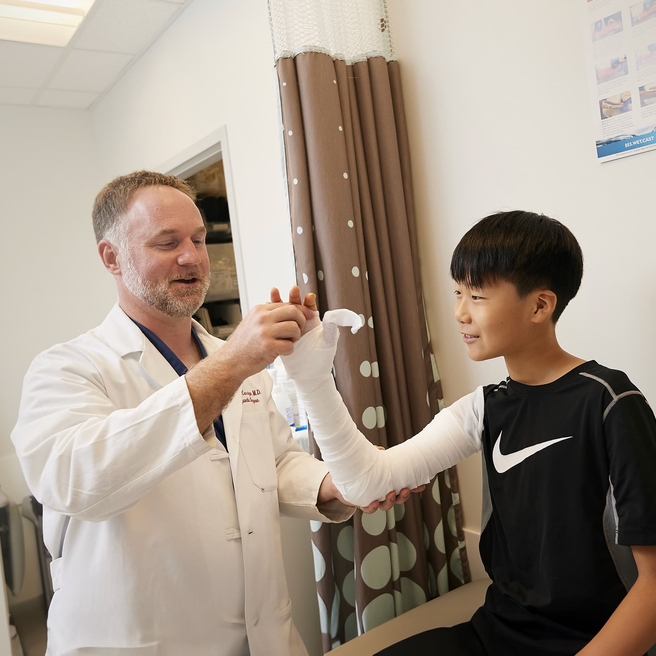What is back pain in children and adolescents?
Older people aren't the only ones who can experience pain in their backs. Children and adolescents also can experience back pain that can affect their activity level and quality of their lives.
Fortunately, most back pain in children and teens improves with rest, analgesics and sometimes, physical therapy. But in some cases, the pain lingers or repeatedly returns. If this happens to your child, you should contact your child's pediatrician or an orthopedic physician for further investigation.
In rare cases, back pain in children is a symptom of a larger problem that may need surgical intervention to treat.
Testing and diagnosis of back pain in children and adolescents
At Children's Hospital of Philadelphia, back pain is assessed by physicians in the Orthopedic Center who specialize in diagnosing and treating spine conditions and injuries in children, teens and young adults.
World-renown experts from our Spine Program will examine your child, assess your child's pain, learn about your child's medical history and perform diagnostic imaging to better understand the problem.
Imaging tests
Back pain is a symptom of many different conditions. Because of that, we use a variety of imaging modalities to help us better pinpoint the source of your child's back pain.
These include:
Causes of back pain in children and adolescents
Once our physicians better understand your child's condition — and what is causing the back pain — we will work with you and your child to develop an individualized treatment plan.
Scoliosis
Though not common, back pain can be caused by a form of scoliosis — including idiopathic scoliosis, congenital scoliosis, neuromuscular scoliosis and early-onset scoliosis.
In many cases, scoliosis can be treated with braces, physical therapy and medication for occasional pain. If your child is experiencing severe back pain due to scoliosis, surgical intervention may be necessary.
Treatments include spinal fusion, growing rods and, in special circumstances, vertical expandable prosthetic titanium ribs (VEPTR).
Spondylolysis
A stress fracture is the usual cause of the low back pain experienced with spondylolysis, a defect of the vertebra. The pain occurs in otherwise healthy children or adolescents, and usually happens with vigorous activity.
Most children and teens with spondylolysis can be managed with nonoperative treatment such as pain relievers. However, in some cases surgical treatment is necessary to provide pain relief.
If surgery is necessary, the procedure will most likely be a spinal fusion, or less commonly, a reconstruction of the stress fracture.
Adolescent intervertebral disc herniation
Sometimes one of the discs that cushions your child's vertebrae ruptures or herniates. This puts pressure on your child's spinal nerves or the spinal cord.
Although less common than the disc problems observed in adults, some adolescents do develop disc disease which can lead to considerable pain and disability.
If your child has long lasting, unrelieved pain caused by a disc herniation, he may require surgical removal of the disc.
Infection
Back pain also can be caused by an infection that involves the disc space, vertebra or the posterior part on the pelvis. Once diagnosed, the infection usually responds to medications. If diagnosis is delayed, an abscess can develop that may require surgical drainage.
Outcomes
Many children who experience back pain will quickly heal and move on with their lives. For children who experienced an infection that caused the back pain, recovery is generally complete after treatment.
For children diagnosed with spine conditions — scoliosis, spondylolysis or disc herniation — that required surgery, ongoing clinical follow-up is encouraged.
Resources to help
Orthopedic Center Resources
We have created resources to help you find answers to your questions and feel more confident in the care you are providing your child.
